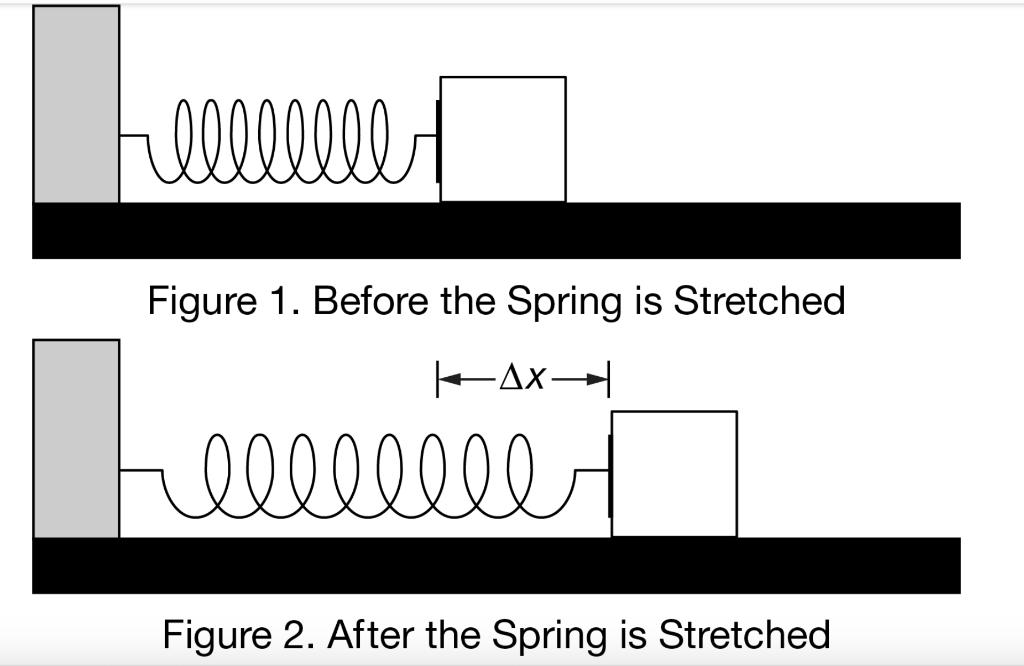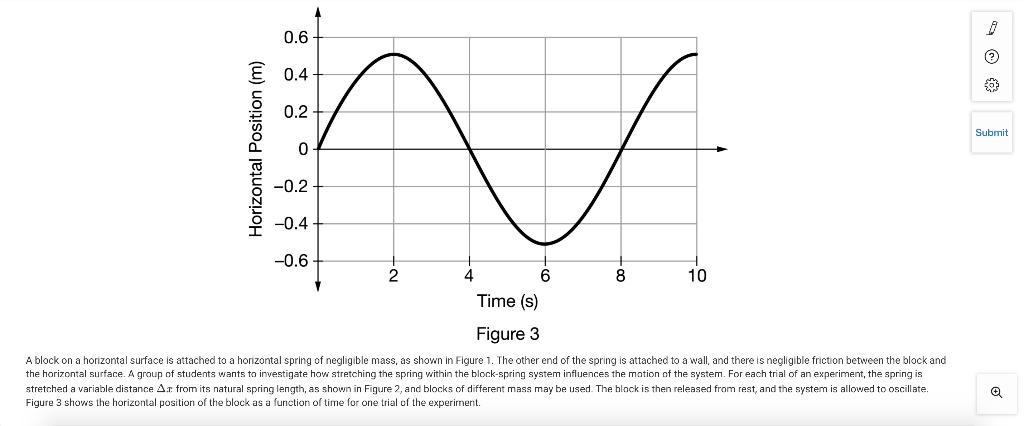Answered step by step
Verified Expert Solution
Question
1 Approved Answer
n ? A block on a horizontal surface is attached to a horizontal spring of negligible mass, as shown in Figure 1. The other end
 n
n

A block on a horizontal surface is attached to a horizontal spring of negligible mass, as shown in Figure 1. The other end of the spring is attached to a wall, and there is negligible friction between the block and the horizontal surface. A group of students wants to investigate how stretching the spring within the block-spring system influences the motion of the system. For each trial of an experiment, the spring is stretched a variable distance Ax from its natural spring length, as shown in Figure 2, and blocks of different mass may be used. The block is then released from rest, and the system is allowed to oscillate. Figure 3 shows the horizontal position of the block as a function of time for one trial of the experiment. In one experiment, the students allow the block to oscillate after stretching the spring a distance A. If the potential energy stored in the spring is Uo, then what is the change in kinetic energy of the block after it is released from rest and has traveled a distance of ? A U B Uo 12 Uo Uo llllllll Figure 1. Before the Spring is Stretched AX- llllllll Figure 2. After the Spring is Stretched Horizontal Position (m) N 2 6 Time (s) 0.6 0.4 0.2 0 -0.2 -0.4 -0.6 8 10 Figure 3 A block on a horizontal surface is attached to a horizontal spring of negligible mass, as shown in Figure 1. The other end of the spring is attached to a wall, and there is negligible friction between the block and the horizontal surface. A group of students wants to investigate how stretching the spring within the block-spring system influences the motion of the system. For each trial of an experiment, spring is stretched a variable distance Ar from its natural spring length, as shown in Figure 2, and blocks of different mass may be used. The block then released from rest, and the system is allowed to oscillate. Figure 3 shows the horizontal position of the block as a function of time for one trial of the experiment. * Submit Q
Step by Step Solution
★★★★★
3.49 Rating (149 Votes )
There are 3 Steps involved in it
Step: 1

Get Instant Access to Expert-Tailored Solutions
See step-by-step solutions with expert insights and AI powered tools for academic success
Step: 2

Step: 3

Ace Your Homework with AI
Get the answers you need in no time with our AI-driven, step-by-step assistance
Get Started


